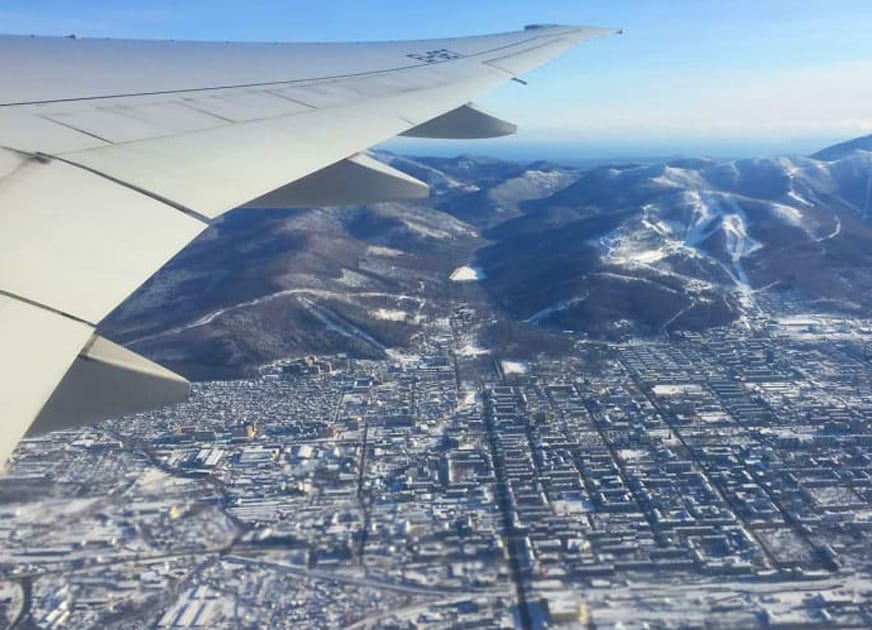
The long, dark sand beach stretches as far as the eye can see, toward a horizon of snow-capped beaches.
At first, the huge wave breaking over the ice patches that dot the waterline is hardly noticeable – until the icy brine crashes at our feet before withdrawing into the waters of the North Pacific Ocean.
But this isn’t the only surprise this deserted beach has in store.
“Look!” shouts the local guide before producing a tiny, yellowish, translucent cube on the palm of her hand: natural amber washed onto shore.
Welcome to Sakhalin, Russia’s largest island: a narrow, 1,000-kilometer long strip of land, sandwiched between the Sea of Okhotsk to the east and the Sea of Japan to the west.
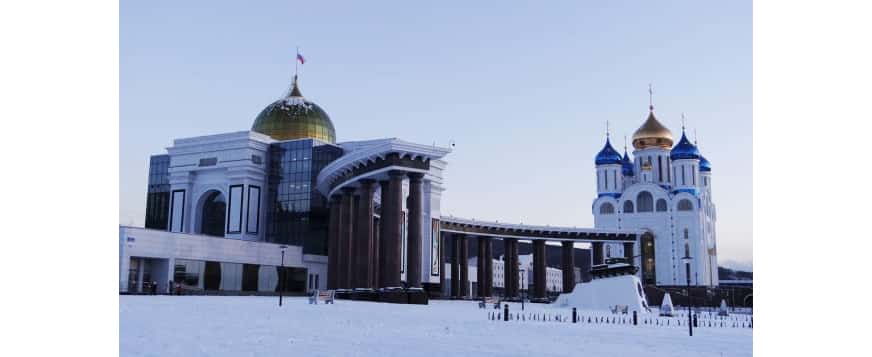
Never a tourist hotspot, Sakhalin is, even within the context of the Russian Far East, overshadowed by better-known destinations such as Kamchatka, with its spectacular volcanoes, or Vladivostok, the eastern terminus of the famous trans-Siberian railway.
Although the island’s seen an increase in visitors in recent years, this has been mostly connected to the development and exploitation of its offshore oil and gas fields and tourists are scarce on the ground.
But with the recent introduction of new, simplified visas, this could be set to change.
Sakhalin has in store a range of truly unique experiences, from its exuberant nature, to the amber-strewn shores of the beaches around Starodubskoye, and the charms of its capital city. It’s unlikely to disappoint travelers looking for a truly unconventional getaway.
For most, a journey to Sakhalin would start in its capital city, Yuzhno-Sakhalinsk.
It’s here that most of the tourist infrastructure is located, including the island’s only international airport, with daily connections to Moscow, Tokyo, Seoul and Sapporo, as well as several other regional outposts.
Even if few travel to Sakhalin for an urban vacation, Yuzhno-Sakhalinsk is well worth a stopover.
At first glance it looks like many other Russian provincial cities, with its nondescript Soviet-style concrete buildings, but there’s a lot more than meets the eye.
The city’s modest dimensions and broad avenues laid out in a grid make for a surprisingly pleasant stroll between the town’s most remarkable sights.
Among them is Victory Square, where the Orthodox Cathedral of the Nativity with its gleaming golden onion-shaped domes stands next to Yuzhno-Sakhalinsk Military Museum, which focuses on World War II.
As in the rest of Russia, World War II (or the Great Patriotic War as it is known to Russians) is remembered here with special devotion.
However, for Sakhalin it has an added significance. In 1945, the city became Russian again after four decades of Japanese rule, when the southern half of the island was known as Karafuto and Yuzhno-Sakhalinsk as Toyohara.
This historical episode is very present on the streets of Yuzhno-Sakhalinsk, with several war memorials dotted around the city.
Today Sakhalin is Russian through and through and only the right-side steering wheel on most second-hand imported cars reminds the visitor that we’re barely 45 kilometers from Japan’s northern tip.
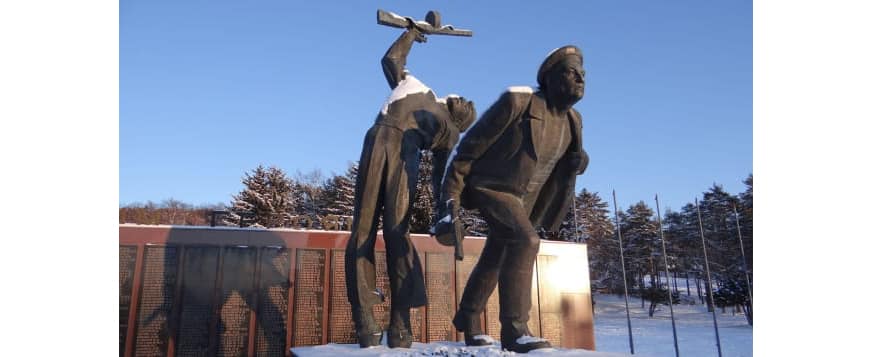
For those interested in exploring the island’s history, a visit to the modest but informative Sakhalin Regional Museum is recommended. Here you’ll also find reference to the fascinating Ainu and other indigenous peoples who have called Sakhalin their home since prehistoric times.
The museum, built in traditional Japanese style, is also one of the few physical vestiges of the Karafuto period, as is the narrow-gauge railway that links Yuzhno-Sakhalinsk to Nogliki, on the north of the island.
The overnight 12-hour train ride is a kind of umbilical cord linking the south of the island, where most of the population live, to the remote, resource-rich settlements of the north.
Not to be overlooked, next to the railway station, a small museum displays several historical locomotives that serviced this line.
But if there’s one thing that really puts Yuzhno-Sakhalinsk in a class of its own, it’s the local ski resort, Gorny Vozdukh (“Mountain Air”), that can be accessed on foot from right next to Victory Square.
The 600-meter altitude of Mount Bolshevik, the resort’s highest point, may not be comparable to the top resorts of the Alps or the Rockies, but here snow is plentiful in winter and its location, right next to the city center, makes for amazing city views during the descent.
Although urban skiing is pretty cool, those looking for the great outdoors don’t need to venture far from the city limits. Most of Sakhalin is, in fact, an uninterrupted stretch of unspoilt nature.
The island is fairly mountainous at its center: a heavily wooded wilderness which in winter becomes a proper wonderland covered with knee-deep cotton-like snow. (But beware! This is also bear country.)
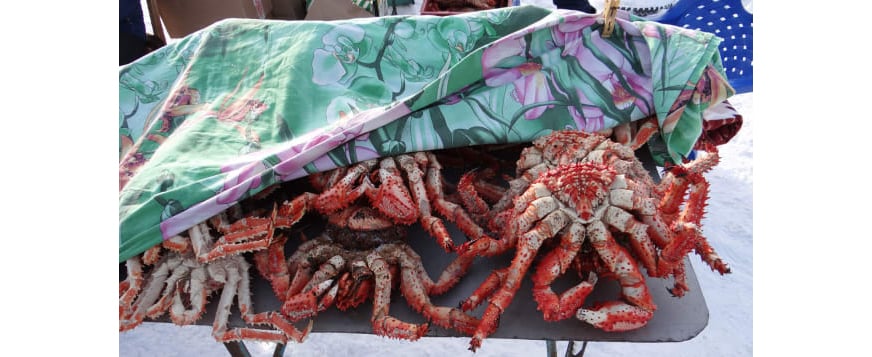
However, you’re never far from the sea in Sakhalin – the island is just 25 kilometers wide at its narrowest point.
This is evident in the local gastronomy, which leans heavily on prime quality seafood and fish. There’s nowhere better to understand it than Yuzhno-Sakhalinsk’s Uspekh market.
Here you can find Sakhalin seafood in all its glory.
The star here is the giant red king crab, a monstrous-looking creature which lives in the waters of the Northern Pacific and is exported the world over.
But there’s ample choice of scallops, shrimps, fresh and frozen fish. Sakhalin’s more than 65,000 rivers and streams also make it a salmon and red caviar powerhouse.
If you prefer to get your own catch, there’s ample opportunity on Sakhalin, as pretty much all local tour agencies organize fishing tours.
No need to get your fishing gear ready to enjoy the island’s long coastline, though. The monumental rock formations of Cape Giant, the sea lion rookeries at Nevelsk or even Moneron Island, an uninhabited nature reserve a few miles off the coast and famous for its diving spots, are all within easy reach of Yuzhno-Sakhalinsk.
Another magical spot is Bukhta Tikhaya, 140 kilometers up the east coast from Yuzhno-Sakhalinsk. This secluded spot, with a name meaning “Quiet Bay” in Russian, is a place of tranquility and beauty, particularly in winter. In its sheltered icy confines, you’ll feel like you’ve been transported to Antarctica.
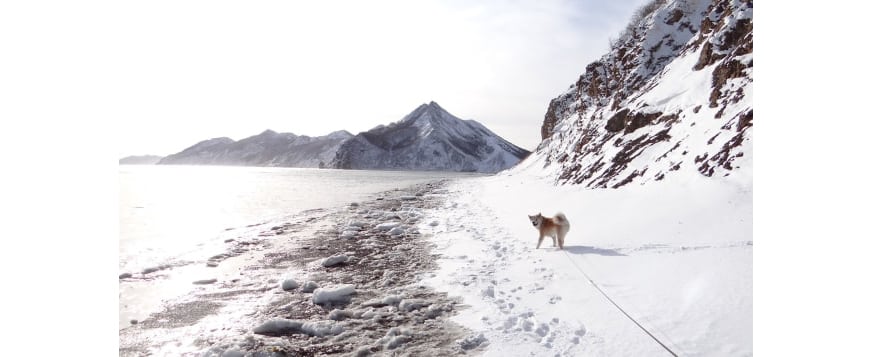
For all the charms of solitude, Sakhalin may be about to become a busier place, and that’s even without having to wait for the construction of a bridge to the mainland (now reported to be under evaluation), or the more unlikely tunnel to Hokkaido.
Citizens of 18 countries, most of them in Asia and the Middle East, can now take part in the e-visa scheme for the Far Eastern regions of Russia. Although the scheme is limited in scope so far, it’s been reported that new countries may soon be added.
Visitors arriving at the airports of Vladivostok, Petropavlovsk-Kamchatsky, Blagoveshchensk, Khabarovsk, Anadyr and Yuzhno-Sakhalinsk will be able to get free e-visas on arrival, doing away with the lengthier and costlier regular visa procedure.
The new simplified visas must be requested no later than four days before the date of arrival and are valid for up to eight days within a 30-day period of their issuance.
Comments
Add comment